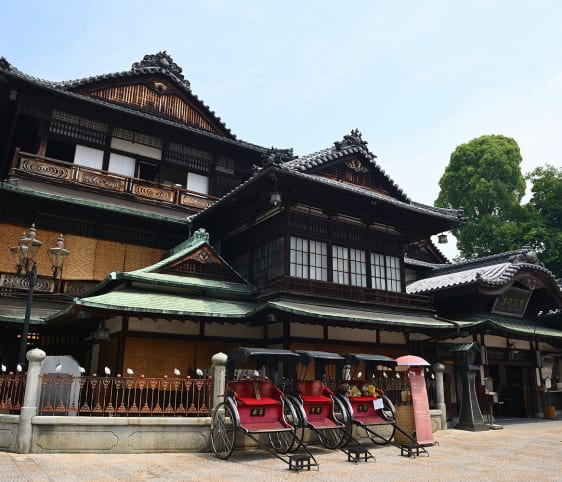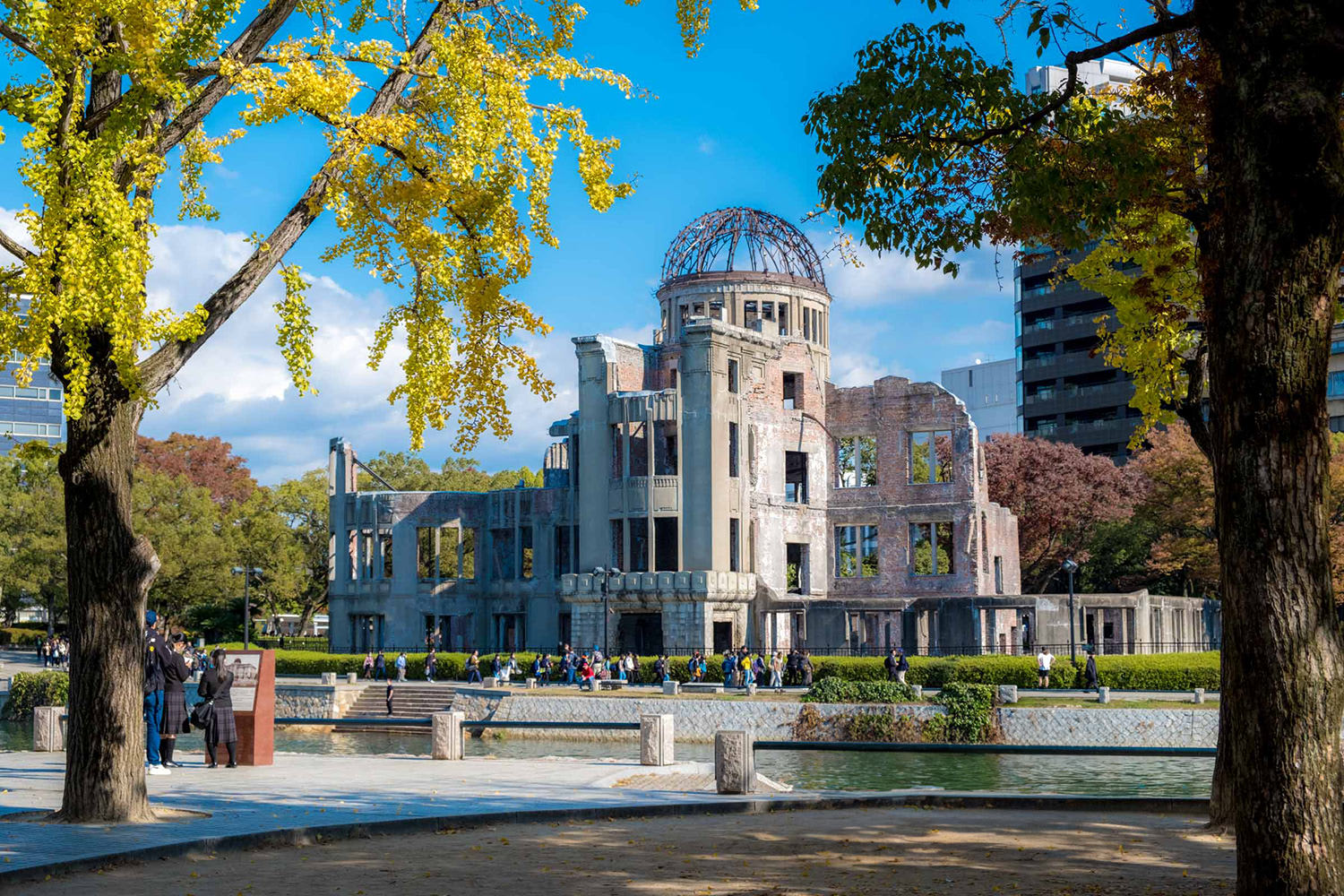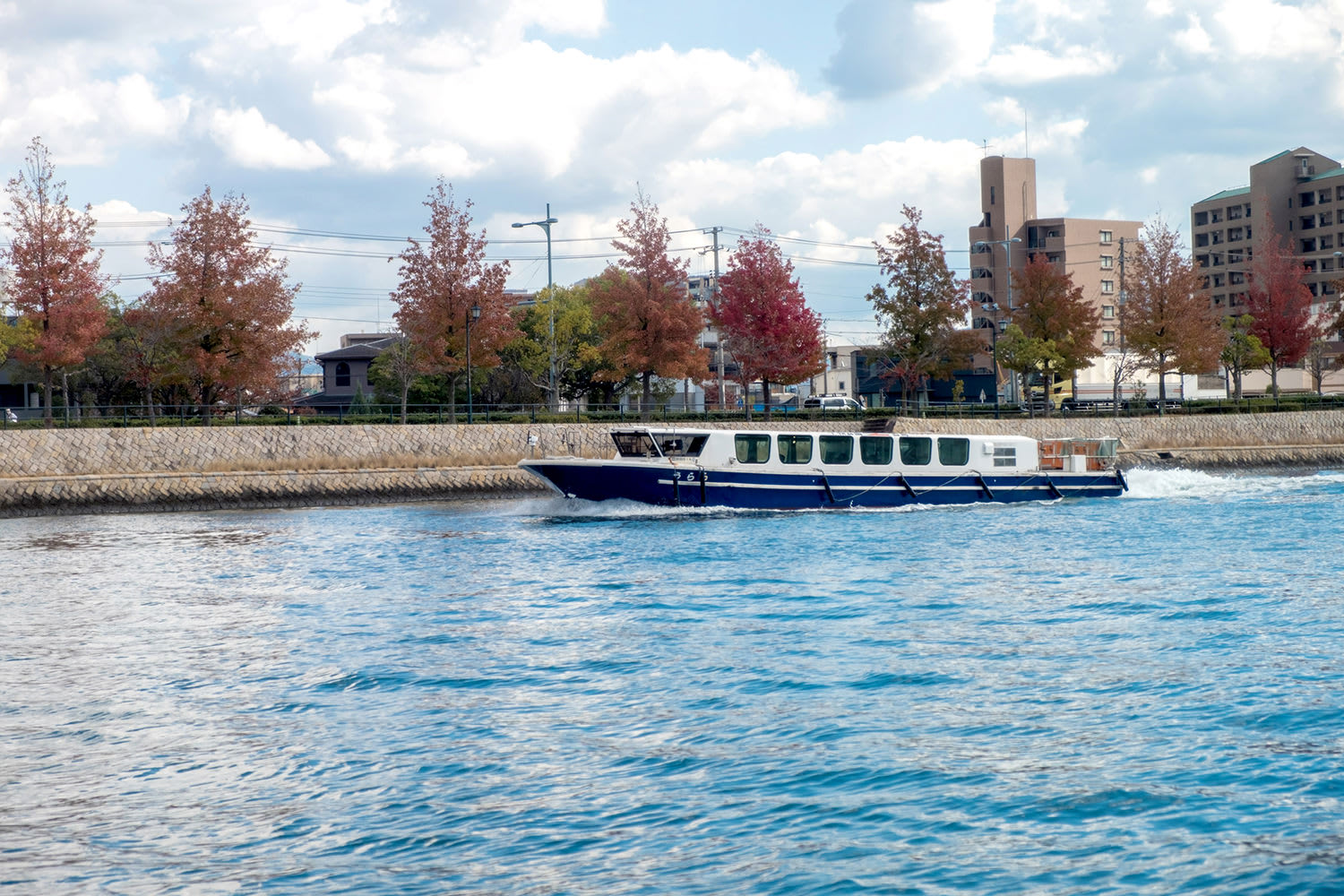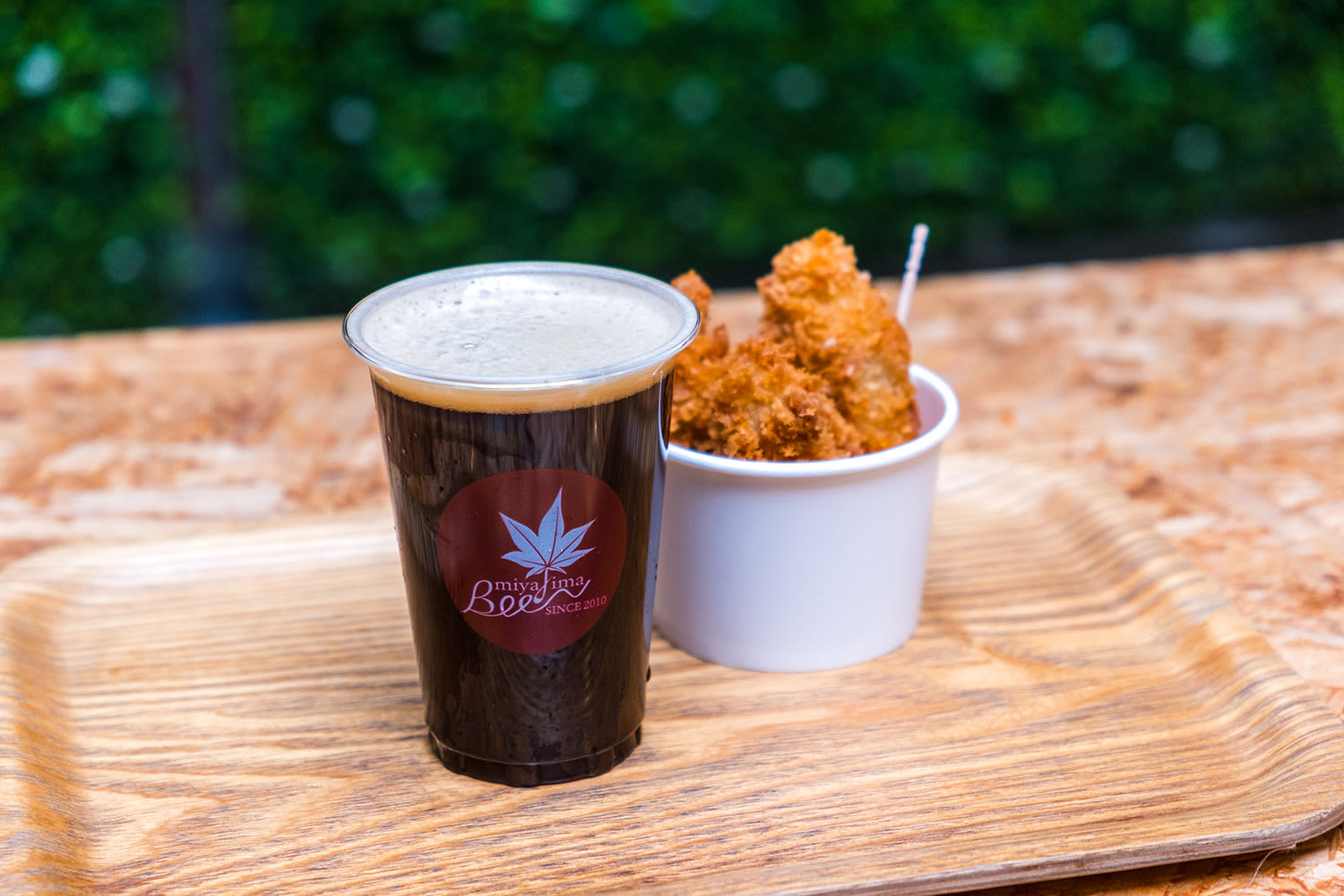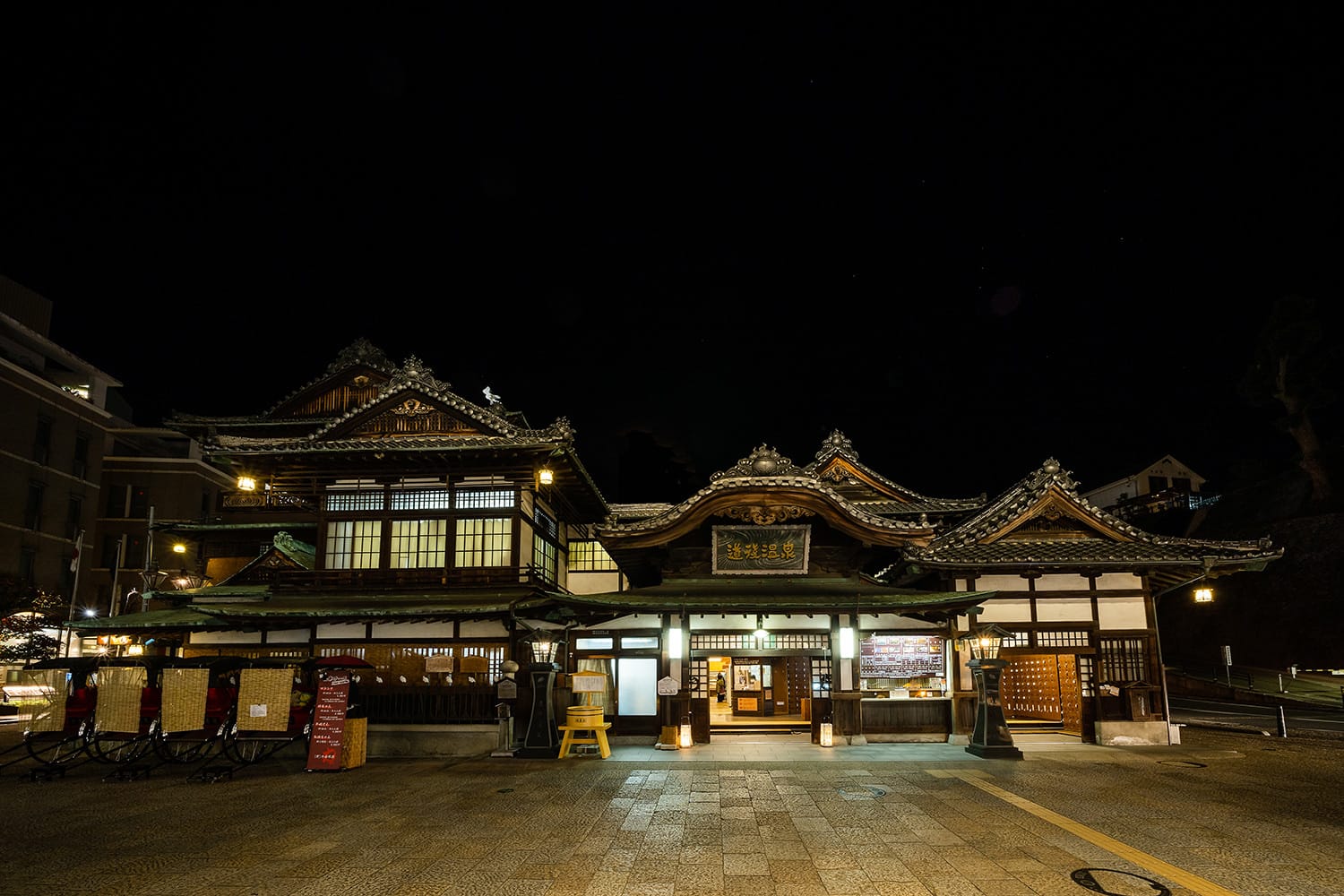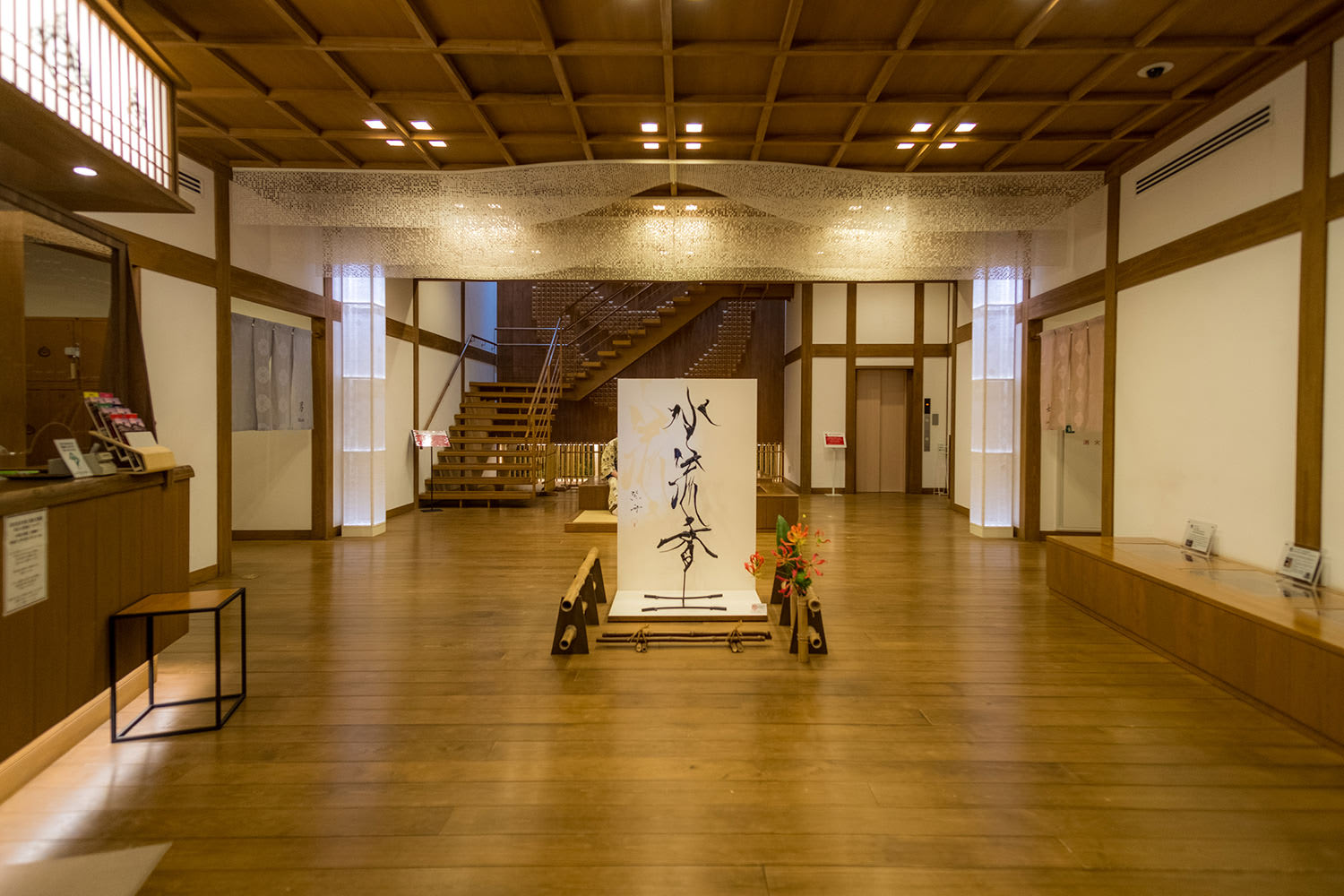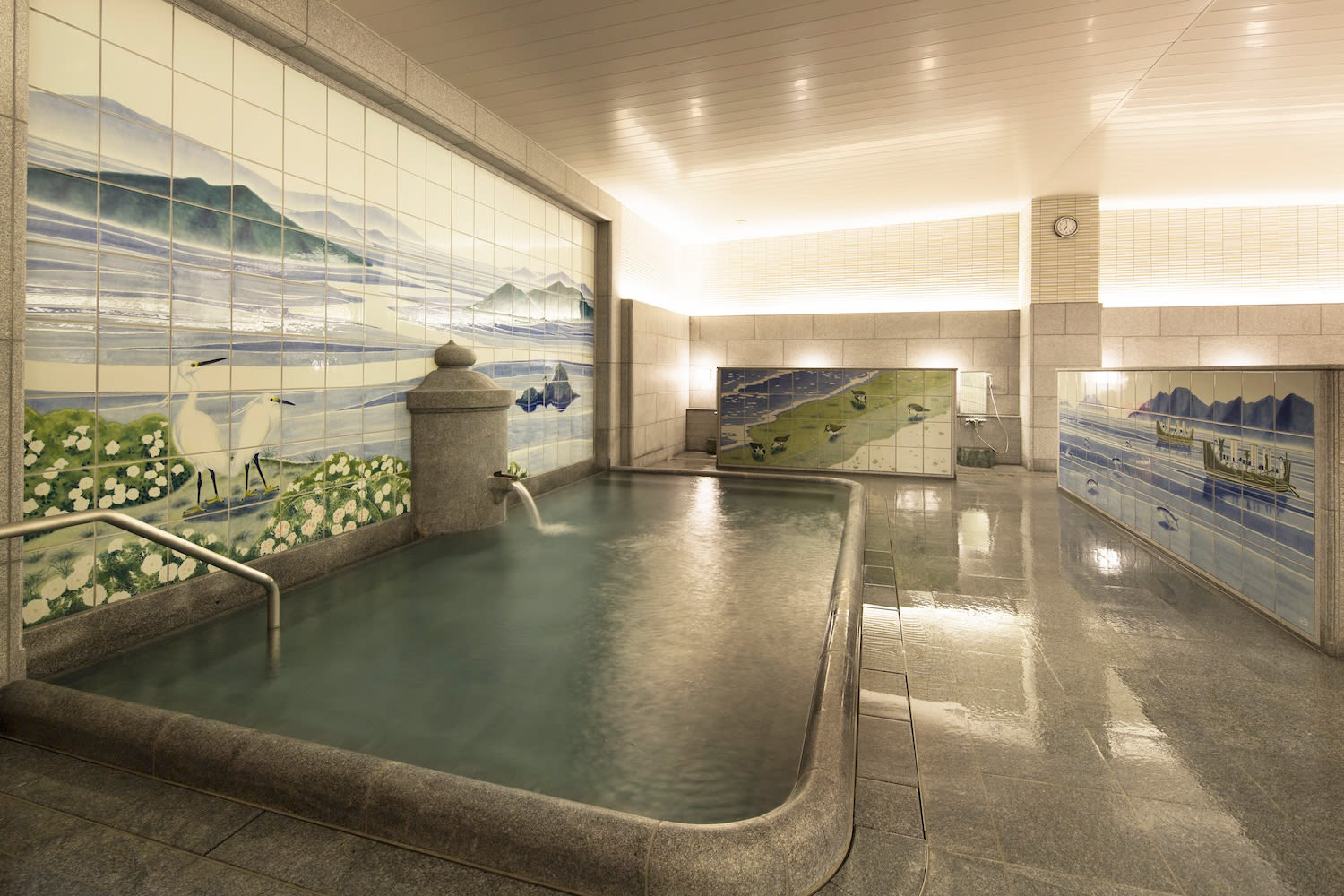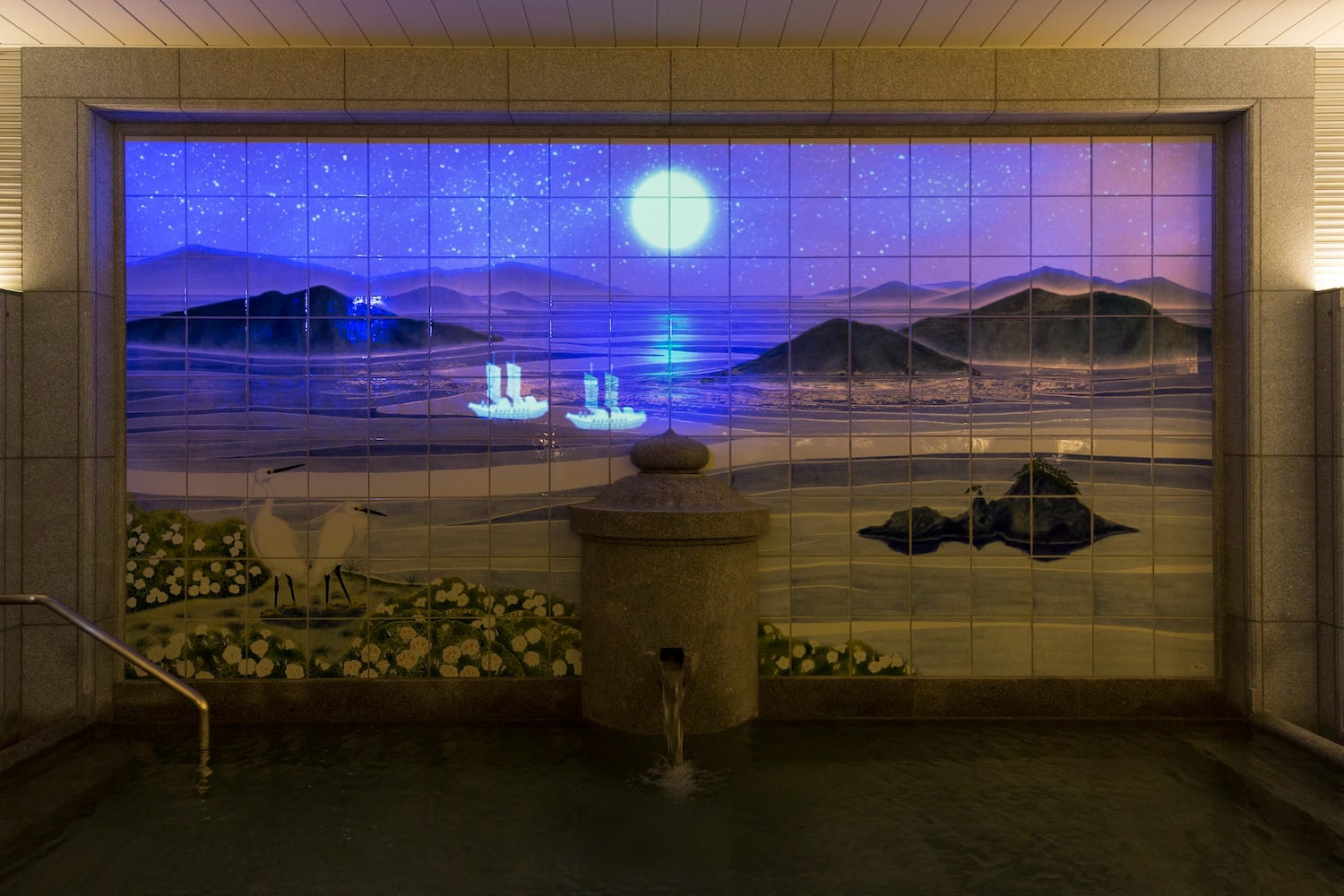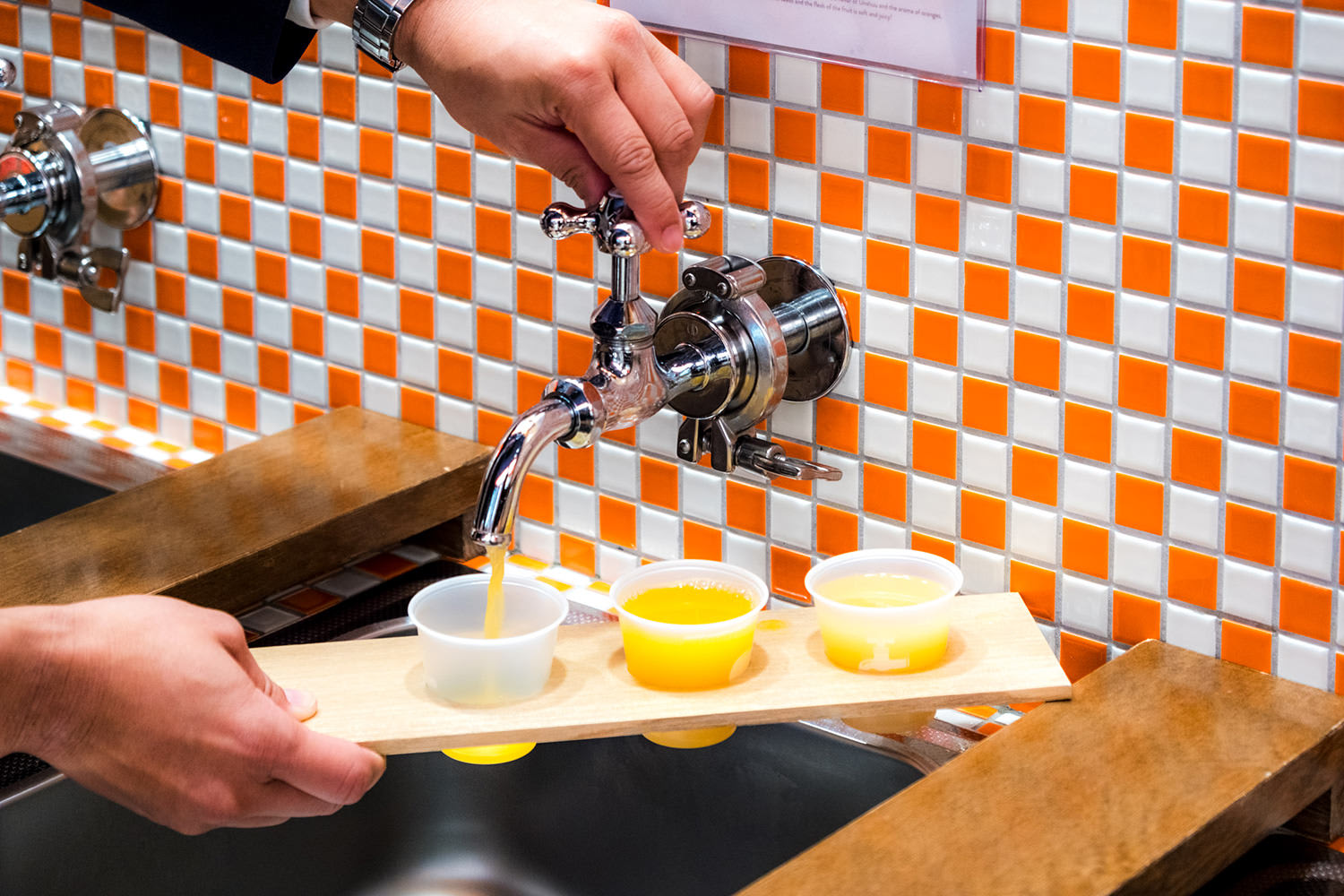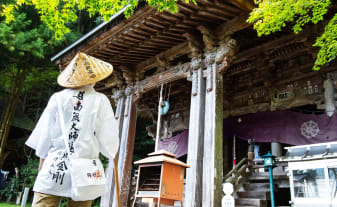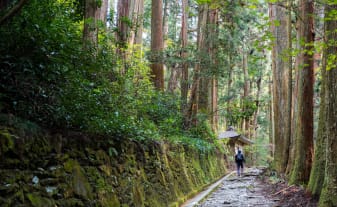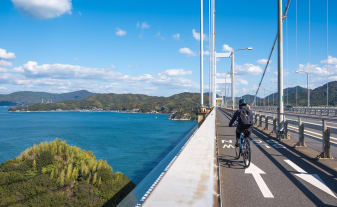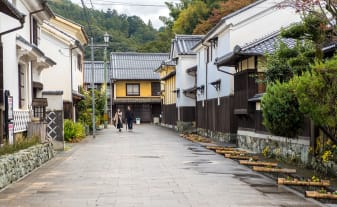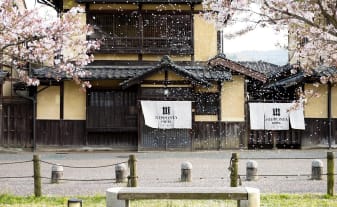 STORIES & GUIDES
STORIES & GUIDES
Japan Travel Inspiration 01: Extend Your Golden Journey With this Easy Trip from Hiroshima to Ehime’s Ancient Hot Spring Town
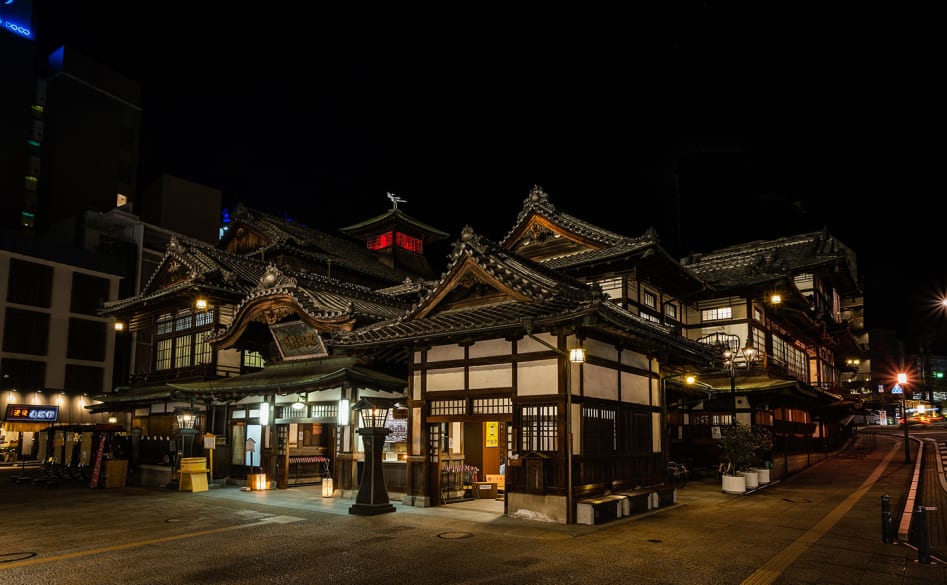
As I looked out of my window, I was met with a wave of white foam splashing against it. The calm blue waters of the Seto Inland Sea whizzed by, as I embarked on a journey between the main islands of Honshu and Shikoku. Despite the inland sea strait separating the two, the Super Jet ferry made the distance between the two feel insignificant in scale.
Having lived in Japan for about six years, I am well aware of Japan’s smallest main island’s reputation for being remote. However, as I made my way on this 70-minute ferry ride, connecting Hiroshima Port to Ehime’s Matsuyama Sightseeing Port, I was pleasantly surprised that this couldn't be further from the truth. The Super Jet lived up to its name, setting the stage for my exciting ocean voyage between Hiroshima and Ehime to my much-anticipated destination for this trip — the ancient Dogo Onsen hot springs in Matsuyama City.
It was here, in Matsuyama City, that I found the 3,000-year-old Dogo Onsen hot springs awaiting me. Its retro-infused shopping streets, dancing mechanical clock, and revered hot springs, which even members of the imperial family have visited, were just the beginning of my Ehime travels.
-
Pay Respect to Atomic Bomb Dome, Hiroshima’s Must-See Destination
My sea-faring journey started in Hiroshima, where I visited one of the city's most significant landmarks, the Atomic Bomb Dome. Despite its somber history, the atmosphere is surprisingly upbeat, with locals, tourists, and school groups paying their respects while enjoying the beautiful canopy of trees in Peace Memorial Park and along Peace Boulevard.
-
My location at the Atomic Bomb Dome is also a 5-minute walk to the Hiroshima World Heritage Sea Route, a high-speed ferry that would take me to Miyajima Island, another of Hiroshima's famous sites. Inside the pier, I bought my ticket from the electronic ticket booth for my short ferry ride.
-
Our journey down the canal was a delightful experience, offering us a chance to admire the cityscape of Hiroshima, before the ferry whisked up away towards Miyajima. For those like me who appreciate the simplicity and seamless travel experiences, this ferry ride was a pleasure as it effortlessly carried us to our destination.
-
See Miyajima’s Famed Sunset Views by the Famous “Floating” Gate
As we approached Miyajima, one of its most famous landmarks came into view - the magnificent Otorii Gate. This was undoubtedly one of the most exciting moments of the ferry ride, as people crowded around their windows to catch a glimpse of this iconic structure. If you've ever seen pictures of Japan, you'll likely recognize the vermillion torii Shinto gate that appears to float effortlessly on the water during high tide. Miyajima is also home to the Itsukushima Shrine, which is equally stunning as the tides rush in under its support beams, giving the illusion that the shrine is floating over the water like a boat.
-
Though small, Miyajima has much to see and do, so it’s time to get exploring! In addition to its World Heritage shrines and wild deer, which mingle casually among visitors, Miyajima is also a fantastic place for foodies and shoppers. Being a beer enthusiast, I couldn't resist stopping by Miyajima Brewery to try their Miyajima Oyster Stout, a dark beer with a faint smoked aroma made with shucked oysters from Miyajima.
While a beautiful tourist destination, Miyajima can also get quite crowded. If you want to enjoy the island's beauty at your own pace and avoid the crowds, I recommend taking a later ferry and spending the night on the island. If I had done this, I could have watched the sunset at the torii gate, which becomes even more ethereal as the gate is lit up from below — an experience I and many other Miyajima's daytime visitors would miss. -
But alas, my journey must continue before the day’s end. I headed back to the ferry terminal port for a 20-minute ferry ride to Hiroshima Port, where I would catch my next ferry ride— the Super Jet.
-
Let’s Catch the Super Jet Ferry for a Swift Ocean Voyage to Ehime
With the sunset slowly setting against my back, I boarded the Super Jet ferry to cross the inland gap between Hiroshima and Ehime. With hardly any other tourist on board, I sat by a window and enjoyed the view of the water as we sailed towards Shikoku. As we crossed the Seto Inland Sea strait, I dozed off briefly and woke up 70 minutes later, finding that we had already arrived at our final destination, Matsuyama Sightseeing Port. The journey was effortless and comfortable, and I wondered why more visitors don't take advantage of this incredible experience.
-
That being said, if you're looking for an unhurried journey, I highly recommend the Sea Paseo as an alternative to the Super Jet. With a travel time of about two hours and forty minutes, you'll have ample time to soak in the beauty of the Seto Inland Sea. The Sea Paseo offers various comfortable seating arrangements, a floor area to remove your shoes, and even a lying area! Moreover, the ship's sleek rooftop deck offers panoramic views, where you can relax in individual gazebos to shield you from wind and sun or enjoy the view from the green terrace with artificial turf.
-
Enter Matsuyama Sightseeing Port, the Gateway into My Next Destination at Matsuyama
Following a brisk journey by ferry, I found myself at the Matsuyama Sightseeing Port, which serves as the entry point to Ehime's Matsuyama City for those voyaging via the Super Jet or Sea Paseo. Outside the port, I found bus stops and an electronic ticket kiosk to purchase bus and train tickets to Matsuyama's Dogo Onsen. Eager to get a head start on my Dogo Onsen excursion, I decided to skip the train transfers in favor of a taxi ride.
-
Spending a Magical Night Soaking in the Ancient Hot Springs of Dogo Onsen
I am a big fan of Hayao Miyazaki's masterpiece "Spirited Away" and have heard rumors that this onsen inspired the film's magical setting. After visiting the place myself, I can't help but believe that these rumors might be true. Although the validity of these claims is debatable, one cannot ignore the undeniable charm and retro ambiance that fills this charming onsen town. I couldn't help but envy the other guests at my traditional ryokan inn who had already donned their cotton yukata and wooden geta sandals, immersing themselves in the nostalgic charm of the place. The magical storybook appeal was undeniable, but without the authentic attire, I felt I was missing out on a crucial part of the experience.
-
Get Whisked Away into an Enchanting Evening Bathing at Dogo Onsen Honkan
The Dogo Onsen Honkan is one of the town’s most iconic structures, and there’s no question why. Standing before the intricate, detailed wooden architecture and ornate decor transported me to a different time and place. According to legend, the springs' healing powers were discovered by an egret with an injured leg that was healed after dipping in the magical waters. The egret statue perched on one of the turrets atop the main building serves as a symbol of spring's healing power, symbolizing Dogo Onsen as a true haven of rejuvenation for those seeking relief from their ailments.
The fame of the hot spring also led to the creation of a private bath called the Yushinden, exclusively reserved for members of the imperial family. While commoners like myself may not be able to bathe in it, I can't help but be curious about what this royal bathing experience is like. Fortunately, there’s a chance to experience a replica of this room at the Dogo Onsen Annex Asuka-no-Yu (which I’ll cover next) to get as close to the royal experience as possible. -
The water's healing properties awaited me inside. After paying my entry fee, I descended a narrow wooden staircase to the women's public bath. The luxurious baths, gleaming marble tiles, and stunning blue and white Tobe ware mural were a feast for the senses. Two deities stood on a podium in the center of the bath. As I immersed myself in the water, I couldn't resist mentally speaking to them, feeling as though they were guiding me toward complete relaxation and rejuvenation.
-
The Dogo Onsen Sky Walkway and Footbath offer another chance to experience the hot springs. This viewing point overlooks the main building and provides a great vantage point. With public foot baths where I could rest my feet, I particularly enjoyed my nighttime visit, taking in the mesmerizing blur of traffic lights around the Honkan building.
-
Traditional Japanese Culture Meets Contemporary Luxury at Dogo Onsen Annex Asuka-no-Yu
If you miss a chance to bathe in Dogo Onsen Honkan, the equally exquisite bathing experience at the Dogo Onsen Annex Asuka-no-Yu awaits instead. As someone who loves crafts, I was thoroughly impressed by the numerous craft details carefully infused into the interior, such as the light-diffusing handmade washi-paper banners and the wood mural shaped like a large yudama, representing a drop of onsen water, on the back wall of the main entrance.
-
Unlike its famous Dogo Onsen Honkan counterpart, the Dogo Onsen Annex Asuka-no-Yu weaves modern elements elegantly through the traditional interior. For example, on the 26th of each month, a light projection of transitioning sunlight, clouds, and the night sky plays against the Tobe ware murals depicting Ehime’s sacred mountain of Ishizuchi. Bathing in these waters provided me not only a relaxing experience but also an entertaining light show!
-
After indulging in the free-flowing hot spring water, I went upstairs to the resting area. The resting area was designed with a strikingly elegant Japanese aesthetic, with tatami floors, paper chandeliers, and wooden ceilings. The resting room visit was a paid add-on, but I couldn't resist indulging in a warm cup of tea while resting on one of the plush cushions to bask in this elegant atmosphere.
-
Sip Coffee in an Authentic Meiji-Era Architecture at Dogo Onsen Station
Although Dogo Onsen is famous for its hot springs, the town has other interesting attractions highlighting its charming retro vibe. If I had decided to take public transportation into Dogo Onsen, I would have arrived here at the Dogo Onsen Station. This tram station, a preserved Meiji-era building built in 1911, has a Western-style exterior, which also houses a Starbucks. Sipping my coffee in this restored wooden interior added a traditional retro feel I'm certainly not used to experiencing at this coffee franchise.
-
A Clock Comes to Life with the Botchan Mechanical Clock
The station is also conveniently located across from the Botchan "Karakuri" Mechanical Clock. At first glance, the clock looked like any other retro clock I might have found in any old town. But when the hour struck, the clock suddenly came to life.
Starting with a chime and song, the clock face flipped around to show a woman dressed in retro Japanese clothing. As it expanded, a series of hidden flaps opened, revealing a delightful crew of characters in baths, enjoying merriment and drinks.
I watched this spectacle through my camera but immediately regretted it as soon as the clock finished its show. For this, experiencing this performance is best seen with the naked eye, not filtered through a camera. -
A Delightful Shopping Experience of Matusyama's Best at the Dogo Shopping Street
After a long day of sightseeing and bathing, I was finally ready to get some dinner and shopping. The Dogo Shopping Street, running from Dogo Onsen Honkan to the retro train station of Dogo Onsen Station, offers some of the best regional cuisines around. One of Ehime's specialties, tai meshi, is a dish made of fresh seabream sashimi served on a bed of rice with fresh egg and dashi, which I greedily ate up to replenish those lost minerals during my baths.
-
At Iori Honten, I browsed through their selection of Imabari towels, renowned for their plush softness and superior water absorbency. With an extensive range of stylish designs to choose from, I found myself considering a number of options to take home and upgrade my bathroom's appearance (and replace my old, worn-out towels).
-
When visiting Iori Honten, be sure to check out one of Ehime's unique attractions — orange juice faucets! Ehime is considered one of Japan's leading mandarin orange production areas, which is celebrated here through its juice bars. At the back of the store, I ordered a flight of five different 100% locally sourced orange juices on tap, ranging from slightly tart to sweet. My vote goes for the sweet juices, but we're all a mixed bag of taste buds here. Whether you're into tangy, sweet, or tart, I bet you there's an orange juice that'll tickle your fancy.
-
The shopping street has several other shops where you can purchase regional items exclusive to this area. I found myself particularly drawn to the marmalade, Tobe ware, and pearls. Next time, I’ll have to bring a large suitcase to fill up on these treasures.
-
Starting with a Short Trip from Hiroshima to Ehime is just the Beginning!
Ehime, an enchanting locale situated just beyond the well-trodden Golden Route, is merely a brief journey from Hiroshima. The Super Jet offers the most practical and swift transportation to Ehime, and this is just the beginning of Ehime’s many offerings! From the historic charm of Ozu's old town cityscape to embarking on a spiritual pilgrimage route; from challenging yourself with a trek up Mt. Ishizuchi and experiencing the unhurried rhythm of island life, Ehime promises an unforgettable adventure for every traveler!
But for now, just look forward to the relaxation that awaits in Dogo Onsen’s traditional Japanese bathing culture to rest up. You have a lot of exploring to do!
You can read about my next trip:
Route 2: Hop onto a Retro Sightseeing Train from Matsuyama to the Charming Old Castle Town of Ozu
If you want to see more of my trips, please go check the links below:
Route 1: Extend Your Golden Journey With this Easy Trip from Hiroshima to Ehime’s Ancient Hot Spring Town
Route 3: A Walking Tour Through the Charming Old Town of Ozu & Interact with the Locals
Route 4: Embark on an Epic Cycling Journey on the Shimanami Kaido, Japan's Famous Biking Route
Route 5: Experience a Walk Through Serene Landscapes & Warmth of this Ancient Pilgrimage Route
-
Scenic Views
-
Eastern Ehime (Toyo)
-
Shrines
-
Temples
Related Articles
Central Ehime (Chuyo)
Explore imposing hilltop castles, iconic bath houses, vermillion shrines, otherworldly karst formations, and the tallest mountain in western Japan.